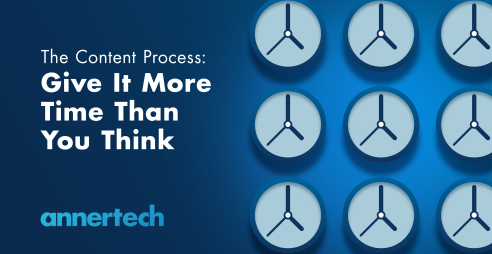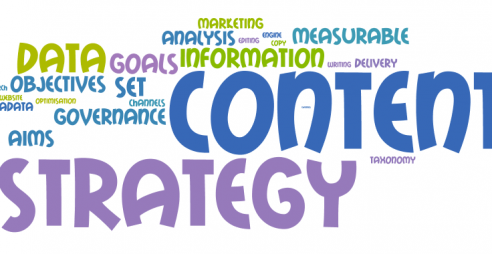Without content there is no website. It shouldn’t be an afterthought
Content is vital to the success of a website, yet it is often overlooked. This article runs through the reasons why content design is important, why it's best to start early, and the challenges faced by organisations writing their own content.
A website doesn’t have very long to make a good first impression – viewers typically leave a website within 10 to 20 seconds. If people don’t like what they see, or if they don’t find what they want quickly they will leave.
But the upside is that if they make it through the first 10 seconds you have the opportunity to keep them for a relatively long time, internet speaking – up to two minutes.
The content that is on a website – the words, the images or videos – and the way it’s presented is described as “the single most important part of the entire equation when it comes to building a successful online presence” says Mike Ellis, author of Managing and Growing a Cultural Heritage Web Presence: A strategic guide.
“All the shiny technology in the world, all the latest social media tools, all the advertising, all the budget – none of it means anything at all unless you have good, solid content which your users want to see.”
– Mike Ellis.
But, “strangely – given the pivotal importance of great content – planning in this area is often overlooked.”
It’s a phenomenon we see regularly. So much attention is given to the design, the well-built components that make a website stand out and the elements that are used to create a page, that content is often an afterthought.
A website is one of the most powerful tools for attracting new customers and driving business growth. It is important to have compelling and optimised content on a website to attract and engage visitors. But if the content is not optimised or is out of date, a business risks being left behind by its competitors.
Because search engines don’t like AI-generated content or keyword stuffing, quality content is more valuable than quantity. And if a website doesn’t have the content that the user is looking for SEO strategies won’t matter either.
The importance of a content plan
A great content plan is all about the message – putting the right message in front of the right people at the right time. This includes words, images and video content.
Content planning allows you to think strategically about what content you’re going to have, how you’re going to source it, whether you’ve got the right people in-house to write, photograph, videograph and edit it.
And figuring out how to serve the best possible content to the audience you are looking to attract isn’t a simple task. It takes time and research to plan effective content for a website.
This includes researching the
- Audience – who is the audience you are targeting, where are they, why are they visiting the website?
- Content – this includes auditing the content you already have – what’s working, what’s not working? Where does it come from? What’s missing? How does it fit with the wider strategic vision?
- Tone of voice – This will largely depend on your business and your target audience. Is the audience the man in the street? Your tone might be friendly and helpful. Is your website aimed at a young, hip crowd? You may want to take an informal tone. The C-suite? You’ll need to sound serious and informative.
The content process will vary according to the type of website and its needs. But typically it includes content creation, editorial support, optimisation for search engines and content design. Keep an eye out for our next blog, which will focus on the content process, and how to ensure you get a good return on your investment.
It’s pointless creating an incredible design that doesn’t work with the content that you need to put in front of your users. And it’s pointless creating great content that doesn’t work with the design.
When should you start thinking about website content?
The short answer is: right from the beginning. It’s like the old chicken-and-egg scenario – which should come first?
Content can be tailored to a website design, and a design can be tailored to content. There is no absolute right approach to this – it depends on each project and its needs. But content and design go hand-in-hand and both should be part of the process from the beginning.
For example, when a website is in the infant stages of development, user testing is usually conducted and information architecture is considered. These two tasks are actually all about content, yet content is often relegated to the background, becoming an afterthought.
It’s pointless creating an incredible design that doesn’t work with the content that you need to put in front of your users. And it’s pointless creating great content that doesn’t work with the design. The two “prongs” actually need to work together for maximum effect.
For example, if the design relies heavily on imagery then those images need to be available in the early stages of the content process. If the words need to be presented in, say, an accordion component for maximum effect, then that layout component needs to be in the design.
People often don't realise they need help with content until it's too late in the process and they're risking their own website launch deadlines (and quite often sailing past them).
Challenges
Getting good, quality content
Creating quality content and the content that users need can be challenging. A plan will definitely help. And it is usually while drawing up a plan that an organisation realises it doesn’t have the skills or the resources to create the content.
This is when outsourcing typically happens.
A proper content plan will guide these external content providers to ensure the right keywords are used, the content that you need is created, and the correct tone is used.
Time
It always takes longer than you think to create content. Allow room for revising and tweaking. And whatever you do, don't skimp on the editing time. A grammatical or spelling error probably won’t break the website but it puts people off and definitely won’t inspire confidence in the organisation.
The content process will vary according to the type of website and its needs. But typically it includes content creation, editorial support, optimisation for search engines, and content design.
We will cover the content process in another blog, but it’s important to acknowledge the importance of each of these stages. Skimping on one will have a knock-on effect on the others.
Conclusion
Putting the best content in front of your audience takes time – it almost always takes longer than anticipated. And the more time you have to plan, create, refine and tweak the content the better the quality will be, and the better the results will be at the end of it.
You don’t have a second chance to make a first impression. The internet is a vast space, and users won’t hang around looking for things.
Make their experience a memorable one and they’ll hang around, maybe even for a few minutes. And if you nail it, they’ll come back for more.
Want to chat about your content plan?
We are passionate about creating the best possible web presence for our clients, and content is a big part of that. Get in touch to see how we can help you.

Alison Visser Head of Content
After more than two decades in journalism, Alison now collaborates with Annertech's clients to ensure that their content is the best it possibly can be.

